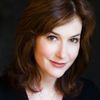
"Your job is to be a kick-ass student," I told my then-13-year-old daughter Maya. "Do that, take care of your little brother, walk the dog, and everything will turn out fine. Promise."
My darling Maya upheld her end of the bargain: straight A's, perfect attendance, gushing teacher recommendations, and more than respectable ISAT scores. She's loved her brother to pieces and has managed to walk the dog through Chicago's blistering winters without too much prodding. She's a good kid.
My friends are raising similarly amazing little munchkins, and yet, here we all are, waiting on pins and needles for the CPS computer to spit out a letter informing us if our kids made it into one of Chicago's selective enrollment high schools -- about as likely as the Cubs winning the World Series.
Of the 10 selective enrollment high schools, five consistently rank in the top public schools in the country, and admission is fiercely competitive. This year, Payton accepted only 2.2 percent of the 10,969 students who applied. Both Young and Northside accepted less than 3.5 percent. With those odds, it's easier to get your high school senior into Harvard.
For decades, middle-class parents have been demanding more quality options, and CPS responded with several new selective International Baccalaureate and Fine and Performing Arts programs, with a separate (and even more complicated) admissions rubric. However, after US News and World Report ranked Lincoln Park as one of the nation's best schools (thanks to its IB cohort), getting into one of the city's long-established IB programs became nearly imposible. Receiving an acceptance letter from a well-regarded Fine and Performing Arts program is such a rarity, one imagines the whole neighborhood would erupt into a spontaneous FAME flash mob.
My little Maya has applied to all three types of schools -- fingers crossed the kid aces the computer match, interviews like Katie Couric, and sails through her dance audition like Jennifer Beals.
Navigating the admission system used to be like reading entrails or the vast migration of birds, but CPS has worked hard to streamline the process. This year, CPS unveiled an in-depth online high school guide that even lists cut-off scores, and a nifty user-friendly point-calculation tool. Next year, parents can expect a single application for all high schools, a virtual one-stop-shop for selective enrollment, IB, magnet, STEM and CTE options. And yet, despite these many improvements, lots of middle-class parents are pining for the good ol' days.
In my city of Big Shoulders, where pay-to-play is an art form, well-connected or über-eager parents used to circumvent the official admissions process by currying favor with principals in a process that was universally called "making your presence known." But in 2011, CPS limited "principal discretion" to 5 percent and instituted a complex quota system defined by socio-economics factors instead of race. In a midwest version of Stratego, officials carved up Chicago into four distinct enrollment tiers based on median family rates of income, education level, home ownership, single-parent, English-speaking, and neighborhood school performance. While a student's 'free-and-reduced' lunch status would provide a more individualized measurement, 86 percent of all CPS students already fit that designation, plus the program is notoriously rife with fraud. In a city as historically segregated as mine, the new tier-based groupings are likely more accurate than not.
While everyone lauds transparency and accessibility, the blanket rubric puts all the kids in my group -- regardless of actual circumstance -- at a considerable disadvantage. For middle-class parents living in Tier Four, many of whom have poured their hearts and souls into improving their neighborhood public elementary schools, it's a bitter pill to swallow. My pal Debi Prince finally snapped when her seventh grader came home from school crying after her teacher told the class that if they lived in Tier Four and got one 'B' they wouldn't get into a get into a selective enrollment high school. "My suburban friends think I'm crazy for living here," Debi says. "I'm starting to see their point."
Not surprisingly, parents -- particularly private school parents -- were rumored to be falsifying their residency on SEHS applications. So much so, that CPS responded with a special hotline to turn in scofflaws to the Inspector General -- as if narking might somehow free up one more coveted spot.
Given the stiff competition, scarcity of spots, and above-board application process, savvy parents try to give their kids every possible edge. Tier Four parents make their kids take SelectivePrep test-taking classes, solicit teacher recommendations, and craft inspiring personal essays (even though schools aren't supposed to accept them). Although the "official" Principal's Discretion Application process will open next month, skittish parents began lobbying months ago.
CPS argues that all the hype and hysteria skews the data. Of the students who scored at 800 or above on the SEHS exam, 89 percent received an offer; and of that pool, 41 percent got their first choice. However, the reality is that not every kid is qualified to go to the top schools, and parents need to widen their consideration set. This year, CPS opened five new Early College STEM Schools, a selective enrollment program at South Shore, and six wall-to-wall IB high schools will open next year. Harvard isn't the only game in town.
My crowd insists that this isn't elitist Snow Plow/Tigger Mom parenting at work: beyond the choice schools lies a steep academic cliff. This year, 18,000 eighth graders applied for 4,340 spots. When the dust settles, 13,660 kids will be kicked back into the regular CPS system, where less than 9 percent of all high students meet college readiness benchmarks on the ACT. Nine. Worse still, there's the unspeakable reality that many of these schools are downright dangerous. No school supply list should include a Kevlar vest.
Over the next few days, parents across my stormy, husky, brawling city are opening letters that will shape their future in profound ways. Some, who had the foresight to hedge their bets, will take out second mortgages to pay the hefty tuition at private or parochial schools; others will try their luck at one of the unproven new STEM or wall-to-wall IB programs; a small but intrepid handful will choose to home school; but most will pack-up the family minivan with all their kid-gear, creative energy, and potential tax revenue, and hightail it to the suburbs -- and p.s. It won't be because they felt the siren's call of an Olive Garden.
